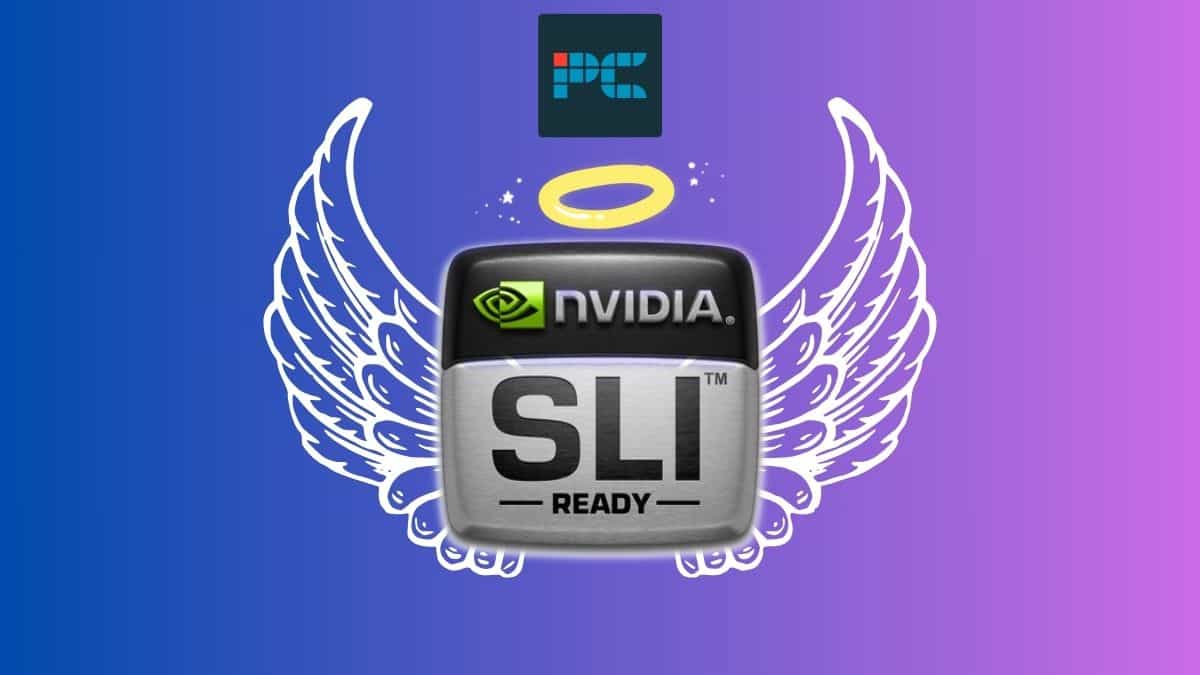It’s good SLI is dead and buried – and my wallet agrees

Table of Contents
Multi-GPU gaming was one of those things that seemed like a good idea for as long as it lasted. I mean honestly, the idea of a modular approach to graphics upgrades – be that SLI or CrossFire – was brilliant. I repeat, the idea was brilliant. Need some more graphics grunt? Don’t upgrade to the latest expensive models, just buy another of the models you have that’s certified for multi-GPU use, hook it up, and hey presto. Right? Well…
CrossFire and SLI have been on my mind a lot lately Why? Because it’s been a while since I overhauled my PC. This is evidenced by the faithful Core i7-7700K in a Z270 chipset mobo in the system under my desk as I type. It’s a PC that’s ticked along nicely for around seven years at this point and has moved home with me more than once.
While I’ve added extra RAM, SSDs, and a WiFi card along the way, the last proper upgrade was an EVGA RTX 3060 XC 12GB. I purchased that during the 2020-2021 GPU shortage for around $500. While that price hurt at the time, given the card’s ongoing use it’s been a rock-solid investment.
A new value-focused system
Unfortunately, my system is finally showing its age. It’s not hitting minimum specs for titles I’m interested in (this means you, GrayZone Warfare system requirements), and an overhaul is due. No problem, right? I don’t need to spend a load of money. After all, I’m still using DDR4, so I can pull together a capable AM4 setup. Plus, I can reuse my working Samsung SSDs. As such, the parts I’ve gathered for this overhaul are:
| Component | Model | Price |
|---|---|---|
| CPU | Ryzen 7 5800X | $180 |
| CPU cooler | BeQuiet Pure Rock 2 | $40 |
| SSD | WD Blue 1TB NVMe SSD drive (just because) | $70 |
| Motherboard | Asus ROG Strix B550-F gaming WiFi (with broken WiFi) | $80 (second-hand) |
| TOTAL | $380 |
Buying a motherboard second-hand isn’t right for everyone, of course. But at half the retail price (since the WiFi doesn’t work on it), that’s a risk I wanted to take. All in all, then, these parts cost me $380 total, and I can expect a clear improvement in performance on a system to keep me going for hopefully years. But there’s a rather large elephant in the room: my loyal RTX 3060. Still the pride of Steam surveys, but its watch may be ending.
There was a dream that was SLI
As a PC builder of my systems for more than two decades, I’ve found myself wondering, “How awesome would it be if I could pick up the same 3060 card that I have, plug it in, and benefit from dual power?” Naturally, ‘very awesome’ is the only answer my rose-tinted shades can see.
But even when available the reality for SLI (and CrossFire) was quite different. Although yes, when working, the extra GPU power was beneficial, it was never double the power. And multi-GPU was only a glint of potential in mid-2010s PC building for some obvious reasons:
The market was niche
Few people wanted to build a dual-GPU system. It sounded great, and the theory was nice but practically…well, few people did it because why shouldn’t one card be able to do what users wanted? AMD’s CrossFire, NVidia’s SLI (and NVLink that came after it) never gained proper mainstream footing due to a combination of lack of interest and technical issues.
The technical issues
If you performed an Internet search for “Is SLI dead”, it’s clear to see that yep, it is. Multi-GPU in general is dead and very much buried, not just because it was niche but because it needed constant support. And not just from AMD and Nvidia; game developers too. Not under enough pressure to get universal performance across various models of graphics cards, there was extra work needed to support multi-GPU systems. Why, if interest was low? Exactly.
Cost
With PC building, all cables lead to cost. If adding a duplicate of an existing card to your system made financial sense, then wonderful. But what about potentially forking out for a new PSU given the extra wattage pulled when both cards spun up? If it’s not financially sensible for the many, and it’s hard work and money for game devs, then why keep that technology around?
A white elephant
Pairing my RTX 3060 with a twin isn’t possible of course, and financially I’m glad. To make it work we’d still need working SLI or NVLink tech, but I’d need a new PSU. Also, the model graphics card I have would need to be below the 3060 launch MSRP of $329 (I know). Unsurprisingly, the actual reality is my exact 3060 model is currently priced at around $425. To be clear, that’s pricier than the best RTX 4060s!
Ultimately, there’s no need to live in the past. My older-gen card deserves a good air-dusting and to live its final days inside another PC, playing undemanding games for a user who wants that. SLI was a useful dream, and no doubt useful for those who used it. But it’s clear it deserves to stay gone, and me? I need a new single graphics card I can rely on for another few years.
